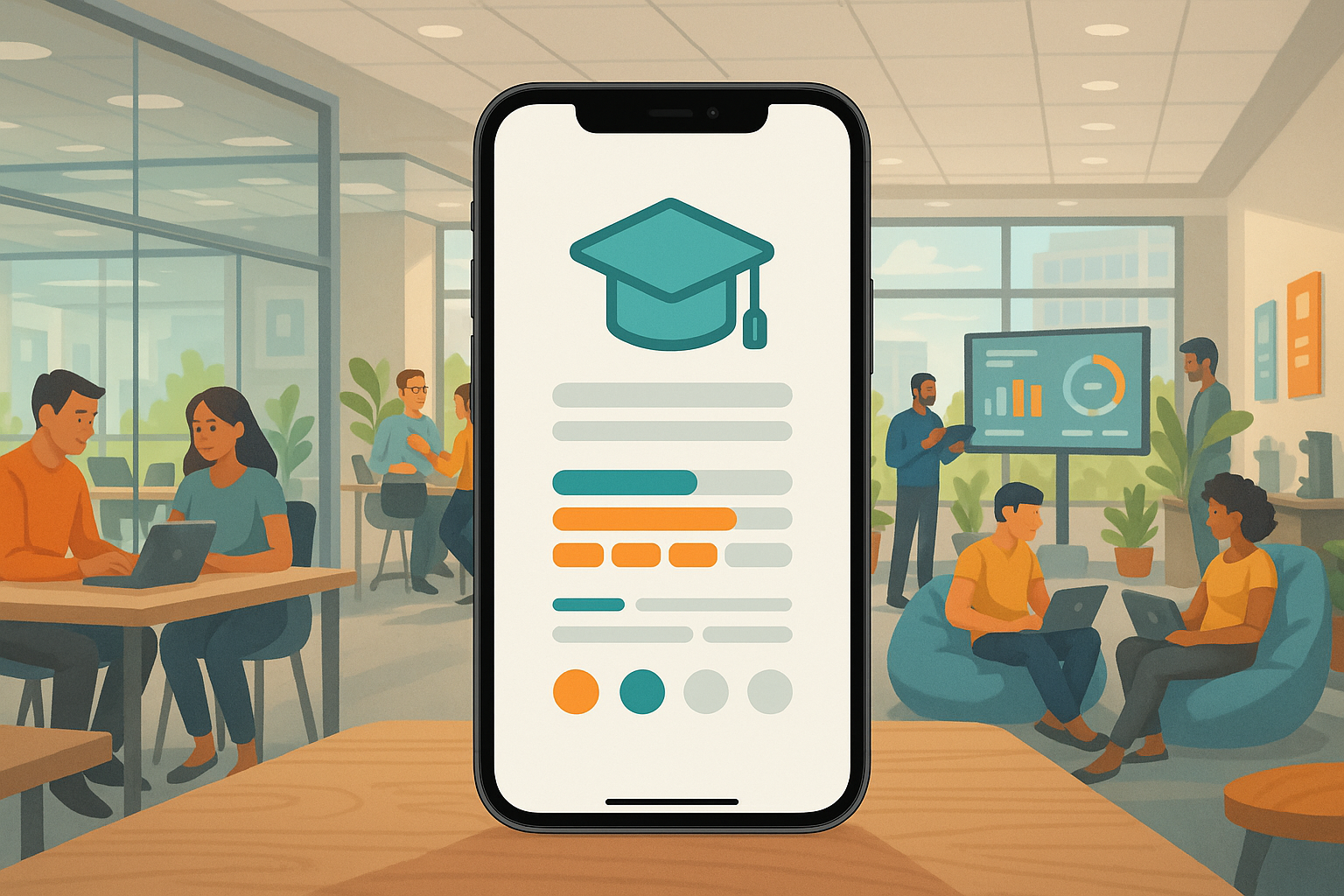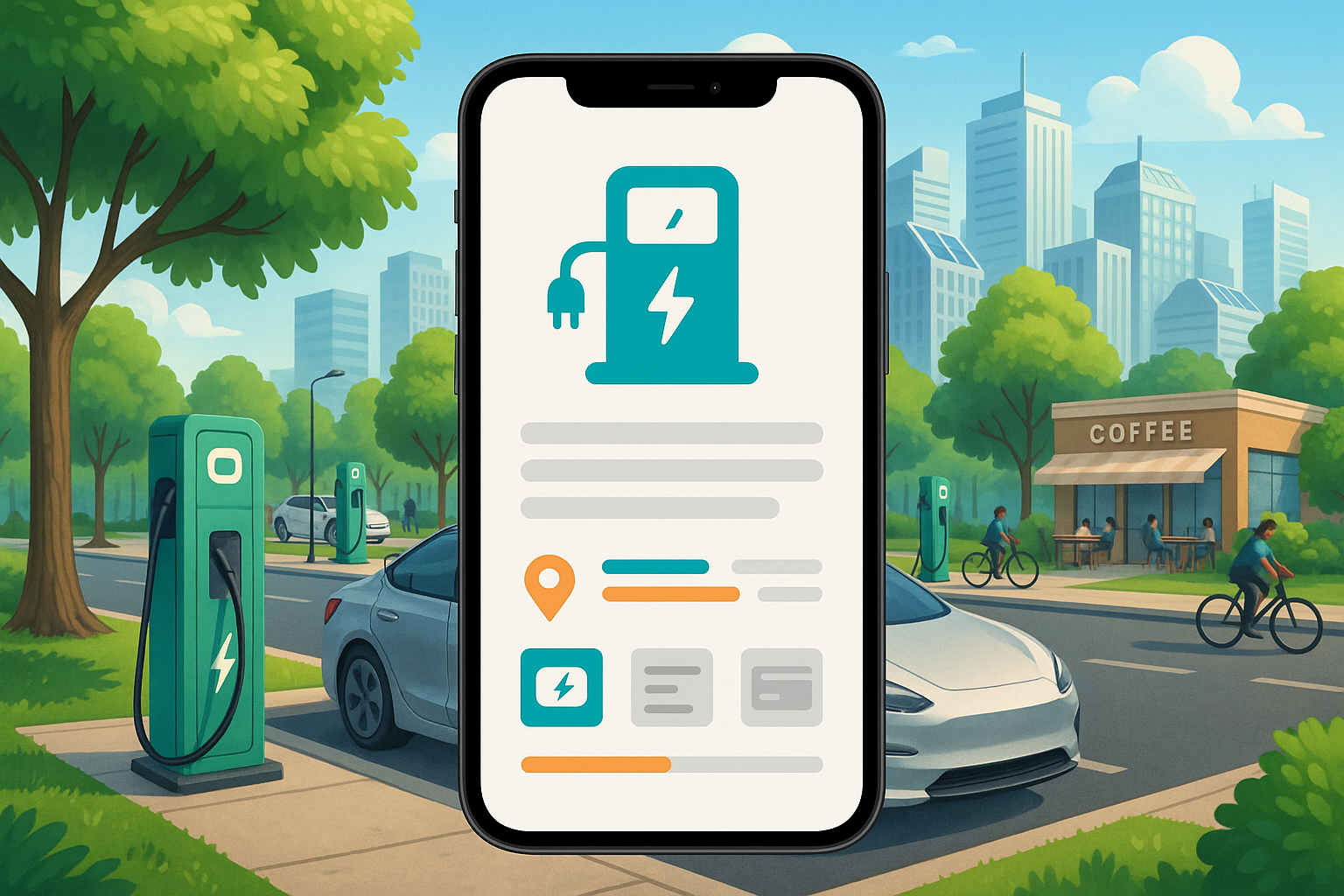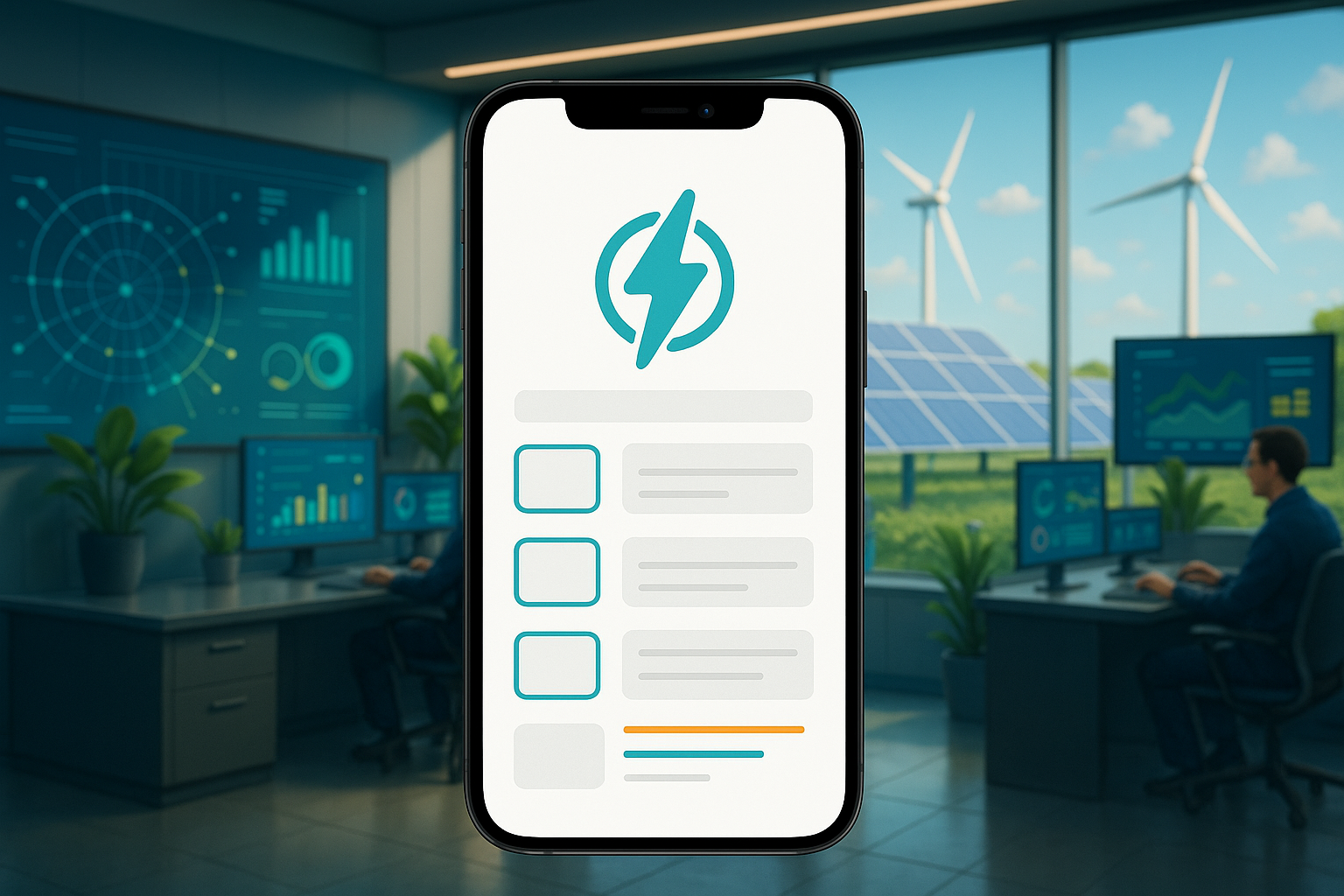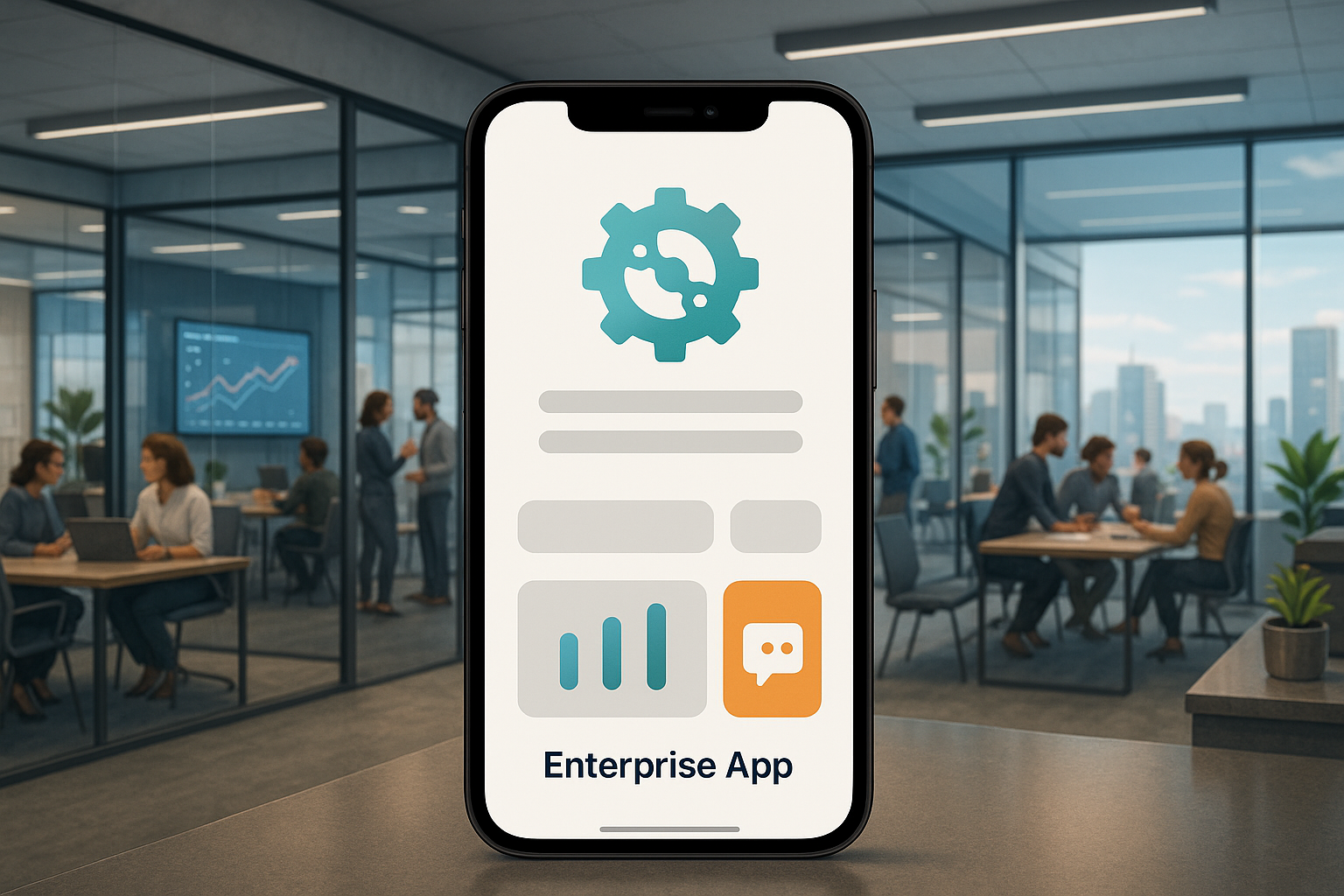Introduction
In today’s competitive landscape, the most successful companies are those that invest in their most valuable asset: their people. Employee development is no longer a “nice-to-have” perk; it’s a strategic imperative for fostering engagement, boosting productivity, and retaining top talent. However, traditional training methods often fall short. They can be inconvenient, unengaging, and difficult to scale, especially for organizations with remote or deskless workers. This is where a dedicated employee development app becomes a game-changer.
Developing such an app, however, is a significant undertaking fraught with technical and strategic challenges. It requires more than just porting training manuals to a mobile screen. It demands a sophisticated understanding of mobile technology, user experience design, learning science, and often, complex integrations with existing enterprise systems. Building a platform with features like AI-powered personalized learning paths, gamification, and robust performance analytics is a specialized discipline that can overwhelm even capable in-house IT teams.
This article serves as a comprehensive guide to navigating the world of employee development app development. We will explore what these applications are and the powerful features they offer. We will delve into the reasons why building one in-house can be so difficult, examine the different types of platforms available, and discuss the factors that influence development costs. Finally, we will identify the top companies that can help bring your vision to life, showcasing how we at MetaCTO, a leading AI-powered app development firm in the US, provide the expertise to build, launch, and grow a transformative employee development solution for your business.
What is an Employee Development App?
An employee development app is a mobile-first software platform designed to deliver training, facilitate skill enhancement, and support career growth directly on an employee’s mobile device or desktop computer. These apps transform traditional, often cumbersome, training programs into dynamic, accessible, and engaging learning experiences. By leveraging the power and convenience of mobile technology, they empower employees to learn anytime, anywhere, fostering a culture of continuous improvement and professional growth.
The core purpose of these apps is to support workforce development and boost productivity. They achieve this through a rich set of features designed to make learning effective, measurable, and motivating.
Key Features and Benefits
A modern employee development app is far more than a simple content repository. It’s an interactive ecosystem built to maximize knowledge retention and user engagement.
- Employee Training Opportunities: A central feature is the ability to post and manage ongoing training opportunities. This allows interested workers to easily browse available courses, sign up for sessions, and learn directly from their preferred device. This digital-first approach is significantly more convenient than outdated methods like manual email sign-ups and information requests.
- Accessible Training Modules: Companies can offer some or all of their training online through dedicated modules. These learning materials are versatile and can include written texts, instructional videos, and detailed diagrams to cater to different learning styles. By posting these modules within the app, they become available not only to office-based staff but also to crucial deskless workers, ensuring every team member has an equal opportunity to develop their skills effectively.
- Microlearning and Mobile-First Design: A cornerstone of effective mobile learning is breaking down complex topics into short, focused, bite-sized modules. This practice, known as microlearning, improves knowledge retention by making information easier to digest. Combined with a mobile-first design, it enables employees to fit learning into their busy schedules, whether on a commute, during a break, or at home.
- Personalized Learning Paths: Advanced apps don’t offer a one-size-fits-all curriculum. They provide personalized learning paths based on an employee’s current skills, career interests, and professional goals. This ensures that the training is relevant and directly applicable to their role and ambitions, which in turn boosts motivation.
- Gamified Learning: To combat training fatigue and enhance engagement, many apps incorporate gamification elements. Features like points, badges, and leaderboards introduce a healthy sense of competition and accomplishment, transforming learning from a requirement into a rewarding experience.
- Social and Collaborative Learning: Learning is often a social activity. These apps can facilitate social learning through integrated discussion forums and peer-to-peer collaboration tools. This allows employees to ask questions, share insights, and learn from one another, building a stronger, more knowledgeable community.
- Performance Tracking and Analytics: For managers and the organization, the ability to track progress is vital. Management tools within the app allow leaders to monitor how many employees sign up for and complete training. This performance tracking provides valuable insights into learning effectiveness, helps identify skill gaps, and supports strategic workforce development. For employees, it provides a clear view of their progress and accomplishments.
- Knowledge Reinforcement: To ensure that learned information sticks, apps often include features like flashcards and short quizzes. These tools help to reinforce key concepts and improve long-term knowledge retention.
Ultimately, the benefits are clear. Employee development apps boost employee engagement, improve critical skills, enhance knowledge retention, and facilitate a culture of continuous learning across the entire organization. They are an essential tool for companies looking to empower their workforce and gain a competitive edge.
Reasons That it is Difficult to Develop an Employee Development App In-House
While the benefits of a custom employee development app are compelling, the path to creating one is lined with significant challenges that can derail in-house projects. The complexity goes far beyond basic app development; it requires a unique fusion of technical prowess, instructional design, and strategic integration that many internal teams are not equipped to handle. Attempting to build such a sophisticated platform without specialized experience often leads to budget overruns, delayed timelines, and a final product that fails to engage users or meet business objectives.
Here are some of the primary difficulties of in-house development:
The Technical Complexity of Core Features
The features that make a development app truly effective—personalization, gamification, and robust analytics—are also the most difficult to build.
- Personalized Learning Paths: Implementing true personalization requires more than just a simple recommendation engine. It often involves building and training AI and machine learning models to analyze employee data, performance metrics, and stated career goals to suggest the most relevant content. This requires data scientists and AI engineers, skill sets that are rare and expensive.
- Engaging Gamification: Creating a gamification system that is genuinely motivating is an art and a science. A poorly designed system can feel childish or distracting. A successful one requires a deep understanding of user psychology and sophisticated backend logic to manage points, badges, leaderboards, and rewards in a way that aligns with learning objectives.
- Advanced Performance Tracking: Building a dashboard that simply shows completion rates is one thing. Creating a comprehensive analytics engine that provides deep insights into learning effectiveness, identifies knowledge gaps across teams, and correlates training with on-the-job performance is a major data engineering challenge.
The Challenge of Seamless Integration
An employee development app cannot exist in a silo. To be truly effective, it must integrate seamlessly with a company’s existing technology stack.
- HRIS and LMS Integration: The app needs to pull employee data from Human Resource Information Systems (HRIS) and potentially sync progress with a legacy Learning Management System (LMS). This requires extensive experience with API development and navigating the complexities of different data protocols and security requirements. A failed integration can lead to data inconsistencies and a frustrating user experience.
- Single Sign-On (SSO): Employees expect a frictionless experience. Requiring them to remember yet another password creates a barrier to adoption. Implementing SSO to allow users to log in with their existing company credentials is a critical but technically demanding task that involves security protocols like SAML or OAuth.
Designing an Exceptional User Experience (UX)
The success of an employee development app hinges on user adoption. If the app is clunky, confusing, or unappealing, employees simply won’t use it, no matter how valuable the content is.
- Mobile-First and Intuitive Design: Designing for a mobile-first experience is fundamentally different from designing for a desktop. It requires a deep understanding of mobile UI/UX principles to ensure navigation is intuitive, content is readable on small screens, and interactions are smooth and responsive.
- Balancing Content and Interactivity: The app must strike a perfect balance between delivering educational content and providing interactive elements. A wall of text is disengaging, while too many gimmicks can distract from the learning. Achieving this balance requires experienced UX designers who specialize in educational technology.
Ensuring Scalability and Long-Term Maintenance
An app is not a one-and-done project. It’s a living product that must evolve with the organization.
- Scalable Architecture: The app’s backend must be built to handle a growing number of users, an expanding content library, and increasing data loads without a decline in performance. This requires expert architectural planning from the outset.
- Ongoing Maintenance and Updates: Mobile operating systems (iOS and Android) are constantly being updated. The app must be continuously maintained to ensure compatibility, fix bugs, and patch security vulnerabilities. This ongoing commitment can be a significant drain on an in-house team’s resources, pulling them away from other critical business initiatives.
This is where partnering with a specialized agency like MetaCTO becomes a strategic advantage. We have over 20 years of experience building and launching complex mobile applications. Our team of experts in custom mobile app development, AI integration, and UX design understands these challenges intimately. We handle the technical complexity, ensure seamless integration, and build scalable, engaging apps that deliver measurable results, allowing your team to focus on what they do best.
Different Types of Employee Development Apps
The world of employee development platforms is not monolithic. Different tools are designed to solve different problems, from comprehensive training delivery to targeted career pathing. Understanding these categories can help your organization identify the type of solution that best aligns with its specific goals.
1. Learning Management Systems (LMS)
Learning Management Systems are the traditional workhorses of corporate training. These are comprehensive platforms designed for creating, delivering, and tracking training content on a large scale. An LMS acts as a centralized library for all of a company’s learning materials. Modern LMS platforms often come with built-in authoring tools, allowing instructional designers to create custom courses, quizzes, and assessments directly within the system without needing third-party software. They are excellent for managing mandatory compliance training, onboarding new hires, and providing a structured curriculum for role-specific skills.
2. Microlearning Tools
In contrast to the comprehensive nature of an LMS, microlearning tools are built on the principle of “less is more.” These platforms specialize in breaking down complex training topics into bite-sized chunks, typically lasting between 5 and 15 minutes. This approach is designed to fit into the natural workflow of a busy employee and significantly improves knowledge retention. Microlearning tools almost always feature a mobile-first design, making them ideal for learning on the go. They are perfect for reinforcing key concepts, delivering just-in-time job aids, and keeping skills sharp without requiring long, disruptive training sessions.
3. Performance Management Systems
While LMS and microlearning tools focus on the delivery of training content, performance management systems are centered on tracking and improving employee performance over time. These platforms go beyond simple annual reviews, offering tools for continuous feedback, goal setting (like OKRs), and performance check-ins. Advanced systems leverage AI-driven insights and predictive analytics to identify performance trends, flag potential issues before they escalate, and provide managers with data-backed coaching recommendations. They help connect the dots between learning activities and actual job performance.
4. Career Development Platforms
These platforms are designed to empower employees to take control of their professional growth within the organization. They help employees plan and progress along their career paths by providing transparency into potential roles and the skills required to attain them. A key feature of modern career development platforms is the use of AI to match an employee’s existing skills and interests with internal job opportunities, mentorship programs, and relevant training courses. This helps improve internal mobility and retention by showing employees a clear future with the company.
5. Integrated Learning Ecosystems
An integrated learning ecosystem represents the convergence of the other platform types. These are all-in-one solutions that combine the features of an LMS, microlearning, performance management, and career development into a single, comprehensive platform. They aim to provide a holistic view of an employee’s entire development journey, from skills tracking and content delivery to performance analytics and career pathing. While complex, these ecosystems offer a powerful, unified approach to talent management for organizations that want to consolidate their tech stack.
Cost Estimate for Developing an Employee Development App
One of the first questions any organization asks is, “How much will it cost to build an employee development app?” The honest answer is: it depends. There is no flat rate for app development, as the final cost is influenced by a wide range of factors. The price can range from tens of thousands of dollars for a simple Minimum Viable Product (MVP) to several hundred thousand for a feature-rich, enterprise-grade platform with extensive AI capabilities.
Understanding the key cost drivers is essential for budgeting and planning your project effectively.
Factors Influencing Development Costs
| Cost Driver | Description | Impact on Cost |
|---|---|---|
| Feature Complexity | The number and sophistication of the features are the biggest determinants of cost. | High Impact: A simple app for content delivery will be far less expensive than one with AI-powered personalized learning paths, complex gamification, social forums, and real-time analytics. |
| Platform Choice | The decision to build for iOS, Android, or both. | Medium Impact: Building native apps for both iOS and Android separately is the most expensive option. Using a cross-platform framework can reduce costs, but may have limitations. |
| UI/UX Design | The level of customization and polish in the user interface and user experience. | Medium Impact: A fully custom, animated, and highly polished design from a top-tier designer will cost more than a simpler design based on standard UI components or templates. |
| Backend & API Integrations | The complexity of the server-side infrastructure and integrations with third-party systems. | High Impact: A complex backend that needs to integrate with multiple enterprise systems (HRIS, CRM, SSO) requires significant development effort and rigorous testing, increasing costs. |
| Development Team | The size, experience, and location of the development team. | High Impact: A large, senior-level team from a US-based agency like MetaCTO will have a higher hourly rate than a small, junior team overseas, but often delivers a higher quality product faster and with more strategic insight. |
| AI and Machine Learning | The inclusion of custom AI models for personalization, analytics, or other features. | High Impact: Developing, training, and deploying custom AI/ML models is a highly specialized and resource-intensive process that adds a significant cost layer to the project. |
The best way to get an accurate cost estimate is to engage in a detailed discovery process with an experienced development partner. At MetaCTO, we offer services like our Rapid MVP Development to help you define your core features and create a clear product roadmap. This allows us to provide a precise quote tailored to your unique vision and business goals.
Top Employee Development App Development Companies
Choosing the right development partner is the single most important decision you will make in your journey to create an employee development app. The right partner brings not only technical skills but also strategic guidance, industry experience, and a proven process for success. Here are some of the top companies in the space.
1. MetaCTO
As a premier US-based mobile app development agency, we at MetaCTO specialize in turning complex app ideas into market-ready realities. With over 20 years of experience and more than 120 successful projects launched, we have a deep understanding of what it takes to build sophisticated, high-performance applications. Our expertise is particularly strong in creating AI-enabled solutions that drive engagement and deliver business value.
What sets us apart is our holistic, partnership-based approach. We guide our clients through every step of the process, from initial validation and strategy to building, launching, growing, and even monetizing the app. Our proficiency in AI Development is not just theoretical; it’s proven in practice through our work on projects like G-Sight, where we implemented cutting-edge computer vision AI, and Bond, where we integrated AI to deliver personalized coaching guidance. This experience is directly applicable to creating the intelligent, personalized learning paths that define a world-class employee development app. We don’t just build software; we build technology roadmaps that increase profit and valuation.
2. BuildFire
BuildFire is recognized as one of the best mobile app development companies in the United States. They are known for their versatility, with the capacity to handle the needs of businesses across a wide range of industries, including employee communication applications. BuildFire’s stated mission is to turn app ideas into a reality for a diverse clientele, from small businesses all the way up to enterprise organizations and Fortune 500 companies.
Integrating Employee Development Features: Why It’s Hard and How We Help
Simply deciding to build an employee development app is the first step. The real challenge lies in the execution—specifically, in successfully integrating the advanced features that make the app truly impactful. This is where many projects falter, as the technical and strategic hurdles are higher than they appear.
The Integration and Engagement Challenge
It’s one thing to have a list of desired features; it’s another to weave them into a cohesive, engaging, and technically sound mobile application.
- Technical Integration Complexity: At a technical level, merging learning modules with performance tracking systems, user data from an HRIS, and single sign-on authentication is a minefield of potential issues. Each system speaks a different “language,” with unique API protocols and data structures. Ensuring these disparate systems communicate flawlessly without data loss or security breaches requires deep architectural expertise.
- The User Engagement Puzzle: Even if the technology works perfectly, the app will fail if employees don’t want to use it. The greatest challenge is creating an experience that feels less like a corporate mandate and more like a valuable, personalized tool. This means the gamification can’t feel tacked-on, the social features must foster genuine collaboration, and the personalized content must be truly relevant. This requires a sophisticated approach to UX design that is grounded in the principles of learning science and behavioral psychology.
- The AI Implementation Hurdle: The promise of AI in employee development—delivering personalized learning paths and predictive performance insights—is enormous. However, building, training, and deploying machine learning models that deliver on this promise is a highly specialized skill. It requires massive amounts of clean data, data science expertise to build the models, and AI engineering skills to deploy them efficiently within a mobile app infrastructure. This is far beyond the scope of a typical app development project.
How MetaCTO Solves These Challenges
This is precisely where we excel. At MetaCTO, we are not just app builders; we are expert integrators and strategic partners.
- Proven Integration Expertise: With over 100 apps launched, we have a proven track record of tackling complex integrations. We architect robust backends designed for scalability and seamless communication with the enterprise systems your business relies on.
- AI-Powered Solutions: We have hands-on experience implementing cutting-edge AI. As demonstrated in our work with G-Sight’s computer vision and Bond’s AI-driven relationship coaching, we know how to leverage AI to create deeply personalized and intelligent user experiences. We can apply this same expertise to build a learning platform that adapts to each individual employee.
- Strategic Partnership: We offer more than just code. Through services like our Fractional CTO offering, we provide the high-level technical strategy needed to ensure your app is not only well-built but also perfectly aligned with your business goals. Our proven process—Validate, Build, Grow, Monetize, Evolve—ensures that we are with you for the entire lifecycle of your product, helping you drive user adoption and achieve a clear return on your investment.
Conclusion
Investing in an employee development app is a powerful move to future-proof your workforce, enhance engagement, and build a culture of continuous learning. As we’ve explored, these applications offer a rich suite of features—from microlearning and gamification to AI-powered personalized paths—that transform how employees acquire and retain skills.
However, the journey from idea to a successful app is complex. It involves overcoming significant technical hurdles in feature development and system integration, navigating the nuances of user experience design, and making strategic decisions about the right type of platform for your needs. The cost is variable, and success often hinges on choosing a development partner with the experience and strategic vision to guide the project.
By understanding the challenges of in-house development and the importance of expert integration, you can make an informed decision that sets your project up for success. A well-executed employee development app is more than just a piece of technology; it’s a strategic asset that pays dividends in employee satisfaction, productivity, and retention.
Ready to elevate your workforce and build an employee development app that drives real results? Talk with an Employee Development expert at MetaCTO today to discuss how we can integrate powerful learning features into your product and turn your vision into a reality.






